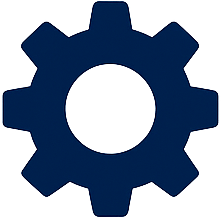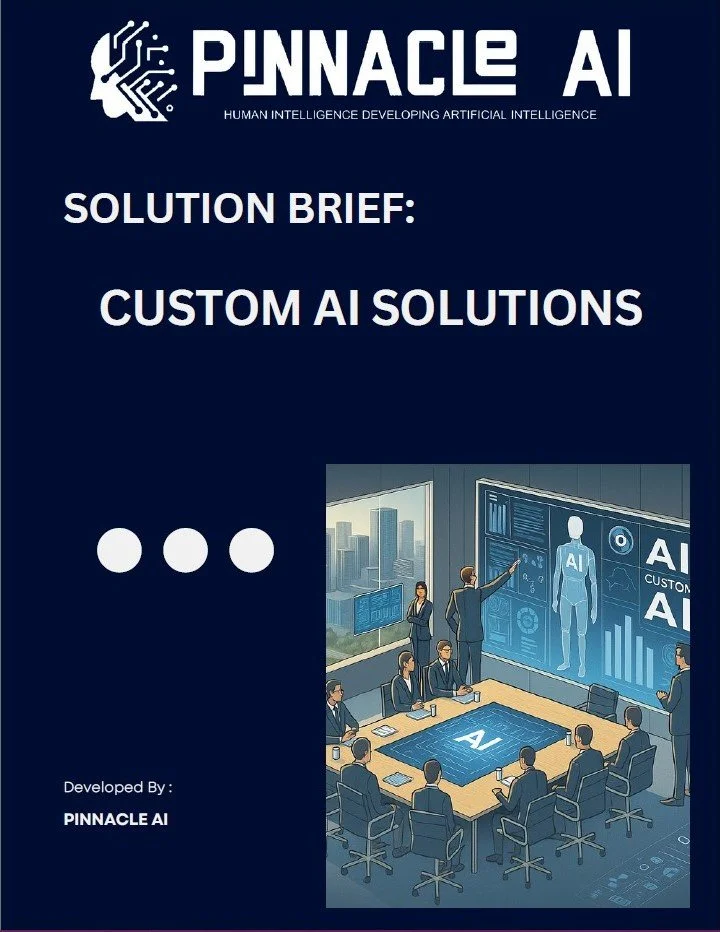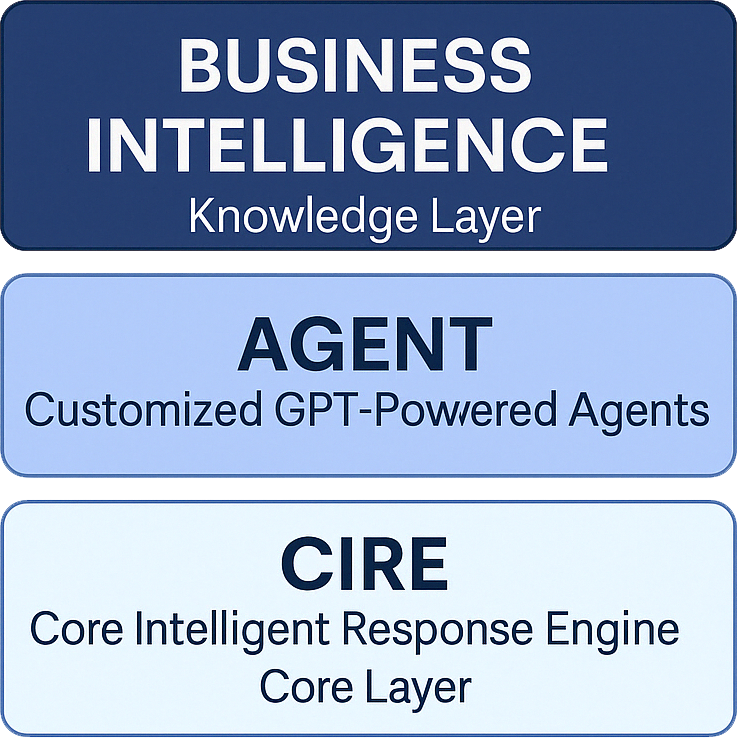
Tailored AI. Real Results.
We build private, domain-specific AI systems that align perfectly with your business goals.
Cost Optimization
Security
Maintainability
Future-proof AI
Flexibility
Portability
Innovation
Build or Buy? The AI Decision That Defines Your Future
As AI transitions from innovation to infrastructure, organizations face a pivotal choice: invest in pre-packaged AIaaS tools for quick wins, or build custom AI to achieve long-term control, precision, and strategic differentiation.
Off-the-shelf AI can get you started. Custom AI gets you further.
While generic AI platforms offer rapid deployment, they limit adaptability, control, and strategic value. Pinnacle AI’s custom-built, modular solutions are designed for sustained growth, industry-specific performance, and full ownership of your AI future.
Key Advantages of Custom AI:
Data Control & Privacy
Business Alignment
System Integration
Vendor Agnosticism
IP Retention
Lower Long-Term Costs
Pinnacle’s Proprietary Multi-Tier AI-ML Framework
Rather than building foundational LLMs—which is capital-intensive and unnecessary—we focus on delivering value through intelligent system design. Our Multi-tier AI-ML framework creates clear separation of concerns, which allows for rapid iteration and scale:
CIRE (Core Intelligent Response Engine): Core Layer
Our proprietary engine, built on top of best-in-class LLMs, acts as the orchestrator—modular, lightweight, and fully extensible. It is the core of all AI agent functionality.
AGENT Layer
Customized GPT-powered agents are developed for specific business functions (e.g., support, sales, compliance, research), each trained and fine-tuned for high-output precision.
Business Intelligence: Knowledge Layer
A plug-and-play knowledge layer containing domain-specific logic, prompt libraries, integrations, and workflows, allowing us to clone and deploy agents rapidly across use cases and industries.
AI-ML Roadmap Timeline
Phase 1: Define the Objective
Clearly define the use case and business objective driving the AI‑ML initiative.
Phase 2: Data & Data Source Discovery
Identify data and sources of data that will be trained.
Phase 3: Foundation Model Selection
Choosing the right foundation model is fundamental to the success of a Gen AI project.
Phase 4: Training the Model
Define training methodology, data splitting, monitoring metrics such as accuracy and precision.
Phase 5: Development and Implementation
Develop RAG, prompt engineering, integrate external knowledge base, error analysis and correction.
Phase 6: Deployment
Select the venue of execution and conduct A/B testing. Implement feedback loops, monitoring systems, and CI/CD pipelines.
Phase 7: Post-Deployment Monitoring and Maintenance
Monitor for drift and errors, update models and prompts. Conduct compliance checks and security audits.
Phase 8: Iterative Improvements
Conduct regular evaluations. Ensure performance aligns with evolving objectives. Incorporate new features.
Phase 9: Governance and Documentation
Governance framework (privacy, retention, access control, etc.).
Healthcare
AI is revolutionizing healthcare by enabling faster diagnoses, predictive care, and more efficient hospital operations, reshaping the future of medicine.
Results That Speak for Themselves
Manufacturing
AI is transforming manufacturing with smarter automation, predictive maintenance, and optimized operations — all fueling greater efficiency and innovation.
Retail
From personalized shopping to smarter inventory, AI empowers retailers to boost profits, improve customer experiences, and stay competitive in a fast-moving market.
Financial Services
AI is redefining finance with smarter decision-making, improved customer insights, and scalable innovation across banking, investing, and risk management.














